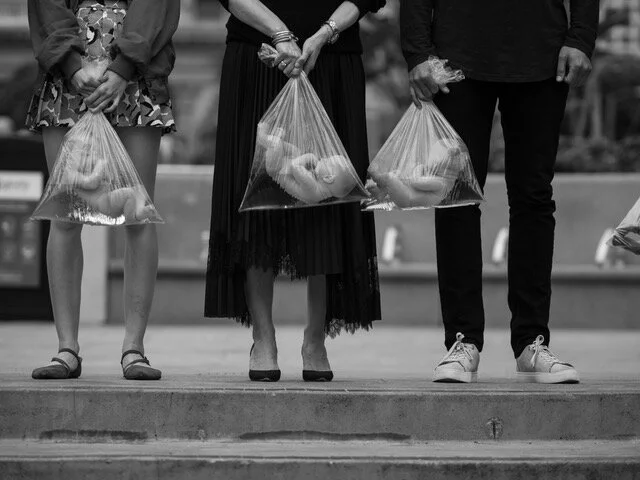Maiza Hixson: Micro-Utopias
By Debra Herrick
Maiza Hixson cut her teeth as a performance artist. Her recent “Real Lonely Dolls” is a stylized multi-platform-spider’s web of self-portrayed personas—parodies of porn and sex dolls—in quasi-plastic postures and listed for ecommerce. Slick images of Hixson as “Lonely Protestor," "Lonely Painter," "Lonely Conquistador” and so on, speak to the macroeconomics of globalized sexuality, as well as her own chameleon skills—with a thick barrier between the performance and the personal.
In her new series “Micro-Utopias,” Hixson exposes what’s inside. Deeply personal, Hixson brings an intimate vulnerability to sexuality through illustrations of softly mutating sexual organs.
A few days after Hixson had a benign tumor removed and was released from a month-long breast cancer scare, she met with LUM in her studio to talk about the organic mutations. “I guess I was thinking about all of that while I was working on these,” she said.
As a child Hixson watched videos of laparoscopic surgeries with her father, an illustrator for medical texts. Early on she developed an interest in the inner workings of the body.
“Micro-Utopias” are surreal medical illustrations, green droplets sprinkle from pink nipples that look like weeping eyes. Multiple green and magenta vaginas sprout from organic purple flutes. Small nodes proliferate from plant-like ovaries, too many clitorises to count, too many nipples, tumors, fingers, penises.
The color palette is an homage to her mother’s affinity for psychedelic posters from the ‘60s and her father’s own amorphous psychedelic paintings. They were young people in the heyday of Haight Ashbury.
Hixson’s dad was a graduate of Philadelphia College of Art, also a drug-induced psychitzophrenic who struggled with mental health, overcoming for the most part, and going on to live a ‘normal’ life as an attorney and environmental activist.
“It’s performance and socially engaged art. I’m thinking about how to create an ethical image. Take the pink pussy hat, not all pussies are pink. Judy Chicago’s ‘The Dinner Party’ has no African American vaginas, Sojourner Truth’s vagina is not depicted,” explains Hixson.
Hixson’s morphing figures reference ‘70s drawing styles and engage a visual discourse on non binary feminism. “Non heteronormativity. Non white supremacist,” she adds.
The unsettling nuance and puzzling impossibility of forms in “Micro-Utopias” provoke a slow and close look.
“Micro-Utopias” will be on exhibit in the fall of 2018 in a solo show of Hixson’s work in UCSB’s Glassbox Gallery, http://www.arts.ucsb.edu/glass-box-gallery/. For more information contact maizahixson@gmail.com.
All drawings are works in progress, 36 x 48 inches, ink and graphite on paper, 2018. www.maizahixson.com
•
Want to write for Lum Art Zine? Contact editor@lumartzine.com.
Interested in how you can support Lum Art Zine? We are currently seeking sponsors for Lum Art Zine’s Summer 2020 issue. To get involved or to make a donation, contact editor@lumartzine.com.







